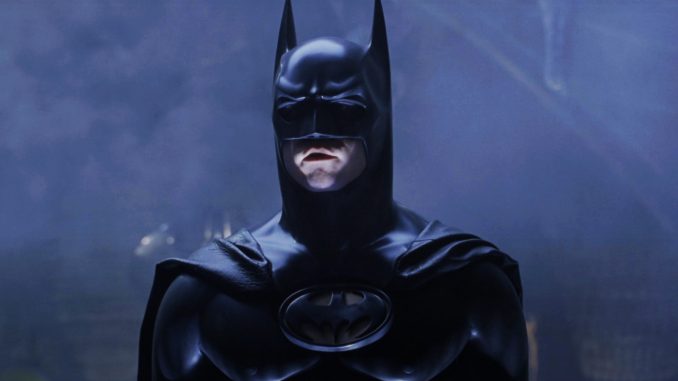
Every Batman movie has a “thing.” Tim Burton’s 1989 “Batman” created a blueprint for future superhero films. His follow-up, “Batman Returns,” saw Burton usher in the franchise era by letting his freak flag fly, upsetting parents and McDonald’s board members, who’d plastered Danny DeVito’s grotesque Penguin across their Happy Meals, in the process. 1997’s “Batman & Robin” is remembered for nearly killing the franchise entirely, while Christopher Nolan’s “Dark Knight” trilogy is remembered for reinvigorating the character for a new generation. In 2022, Matt Reeves proved that there was simply no end to the ways in which Batman could be reinvented, delivering a darker take on the character that provided a welcome antidote to the CGI-fests being pumped out by Marvel.
But 1995’s “Batman Forever” sort of falls between the cracks. An often-overlooked entry in the saga, Joel Schumacher’s first Batman movie was a big deal when it first debuted, making $336 million worldwide — $70 million more than “Returns.” The film’s $52.8 million opening weekend also overtook “Jurassic Park” as being the highest opening-weekend gross of all time at that point, with Schumacher delivering a bonafide success for Warner Bros. following the departure of Burton and series lead Michael Keaton.
Ever since, however, “Batman Forever” tends to either be overlooked or lumped in with “Batman & Robin” as a campy toy commercial that almost spelled the end for Batman on film. But not only was “Batman Forever” much darker than its 1997 successor, it was also groundbreaking in terms of Batman movies — for reasons you might never have realized.
Batman Forever featured a CGI first
These days, digital doubles are everywhere. Entire set-pieces are created using CGI superheroes, with the Iron Spider suit in “Spider-Man: No Way Home” being a recent prominent example. But even when superheroes aren’t doing battle, they’re often rendered with CGI. Behind-the-scenes featurettes have revealed what Marvel movies look like before special effects, and aside from them being shot on blue-screen hellscapes, the actors often don’t wear full versions of their costumes. Robert Downey Jr.’s Iron Man, for example, was often just the actor wearing a helmet and a motion-capture suit. All of which is to say that the digital double has become an indispensable and pervasive element of superhero movies, and of action movies in general.
As such, it’s not an overstatement to say that “Batman Forever” is truly groundbreaking, as it features the very first superhero digital double, and likely the first ever CGI stunt double. This shot from the movie featured a fully digital Batman descending from a skyscraper in Gotham, and considering the film debuted in 1995, it holds up extremely well. The computer-generated Batman was designed by Pacific Data Images (PDI), which would later be bought by DreamWorks, and was used for a handful of other shots in the film, including Batman’s early arrival in Gotham at the scene of Two-Face’s bank vault siege. This shot in particular features Val Kilmer’s Dark Knight descending onto the Gotham streets to meet Commissioner Gordon (Pat Hingle) and Dr. Chase Meridian (Nicole Kidman), and in the 30 years I’ve been rewatching the film, I didn’t notice this was CGI until recently.
The use of a digital double wasn’t just an impressive technical achievement. It helped “Forever” feel like a much more spectacular and expansive vision than the two prior movies. Kilmer’s hero was shown leaping from skyscrapers, hanging from helicopters, and descending from rooftops to land in the driver’s seat of his newly-redesigned Batmobile — which was originally set to be based on drafts produced by H.R. Giger, who had a surprisingly strong influence on “Batman Forever.” While Tim Burton’s films were visually striking for their immersive production design and innovative costuming, “Forever” was striking for its scale and expanded action — and it wasn’t just the CGI double that helped in that regard.
Gotham felt like a megacity for the first time in Batman Forever
When Tim Burton set out to make “Batman,” he did so amid significant uncertainty and controversy. 1989’s “Batman” was a risk in many ways, not least because Warner Bros. had put up an unprecedented $35 million to make a film based on a property that hadn’t enjoyed mainstream appeal since the 1960s Adam West-led “Batman” series. What’s more, Michael Keaton’s casting in the lead role caused an uproar that had Burton fighting to keep his star. Shooting away from Hollywood in England’s Pinewood Studios allowed the director to put some distance between him and the pernicious discourse surrounding his project, and it also allowed production designed Anton Furst to construct his own vision of Gotham City from the ground up on Pinewood’s expansive backlot. Several scenes in “Batman” were shot on real locations, including the Axis Chemical sequence which was filmed at Acton Lane Power Station, where James Cameron’s “Aliens” had shot a few years prior. But for the most part, Furst’s fabricated industrial nightmare version of Gotham was where the events of “Batman” played out.
For “Batman Returns,” Burton went even more self-contained, hiring production designer Bo Welch to construct one of the most darkly alluring sets ever created across multiple soundstages at Warner Bros. Studios in Burbank. Whereas “Batman” had used a few real-world locations, “Returns” was shot entirely on the Warner soundstages, using miniatures for many aspects, including Wayne Manor and the final shot of Gotham.
“Batman Forever,” however, was the first time we saw real locations used to depict Gotham City streets. Joel Schumacher shot the opening scenes on Figueroa Street in Los Angeles, melding the shots with matte paintings to create his larger, neon-lit mega-Gotham. The exterior of the Surrogate’s Court in Lower Manhattan doubled for Dr. Chase Meridian’s offices, and crucially depicted Val Kilmer’s Bruce Wayne actually pulling up outside. This was a small but significant change from Burton’s approach. The “Batman” director used real places for establishing shots of Wayne Manor and Axis Chemicals, and for the interior of the latter. He also used real locations for the interior of the Gotham Globe newsroom and Wayne Manor interiors, but any time you saw Bruce Wayne or Batman out on the Gotham streets, it was all shot on the Pinewood backlot. And again, everything for “Returns” was shot on the Warner soundstages.
Combined with sweeping CGI shots of the Gotham skyline, miniatures, and matte painting, the effect of these real-world locations for the actual streets of Gotham City made the Gotham of “Batman Forever” feel so much more expansive, and easily the largest-scale version of the city ever put to film at that point.
Batman Forever’s CGI use went beyond digital doubles
When Christopher Nolan was making 2005’s “Batman Begins,” he decided to shoot multiple scenes in Chicago while also constructing his own Gotham in a U.K. airport hanger. He ramped up the realism for 2008’s “The Dark Knight,” which shot extensively in Chicago, before using Pittsburgh and Los Angeles as the basis of his Gotham for 2012’s “The Dark Knight Rises.” With the Nolan trilogy, Gotham slowly morphed from the theatrical visions of the ’90s movies to a city that felt much more familiar to audiences — mainly because it was. But this trend of using real locations for Gotham streets really began with “Batman Forever,” which, similarly to “Batman Begins,” melded actual locations with the fantastical designs of production designer Barbara Ling.
What’s more, “Forever” was the first Batman movie to use a fully CGI shot to depict Gotham. A sweeping shot of Wayne Enterprises sets up the scene where Jim Carrey’s Edward Nygma meets Val Kilmer’s Bruce Wayne for the first time. While the models used in the shot continue the imposing Gothic design of the city, the actual graphics leave a lot to be desired. In other words, unlike Val Kilmer’s digital double, the Wayne Enterprises shot does not hold up 30 years later. But just like the digital double, it was a first for the Batman franchise and superhero movies as a whole.
Today, Matt Reeves and his unfortunately-titled “Epic Crime Saga” Batman universe makes extensive use of CGI to model Gotham, using virtual reality to design digital cityscapes and projecting them onto ILM’s Volume, an LED setup that has reinvented visual effects. It’s an approach that works well at complimenting Reeves’ real-world Chicago and Liverpool locales, and can arguably be traced all the way back to “Batman Forever,” its dodgy Wayne Enterprises establishing shot, and its attempts at breaking out of soundstages to depict a truly diverse and sprawling Gotham City.

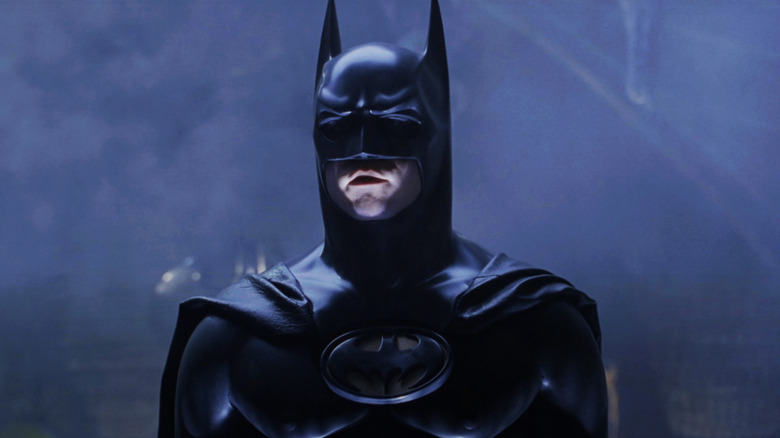
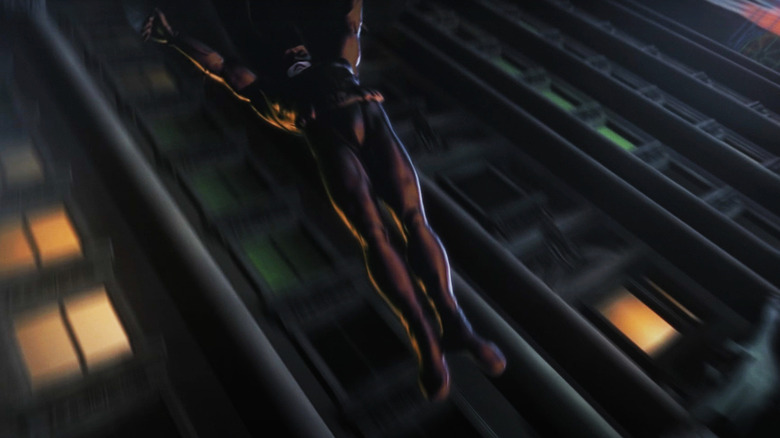
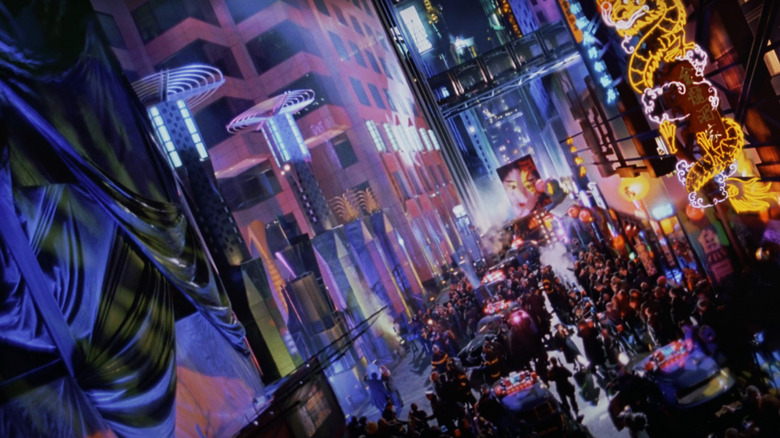
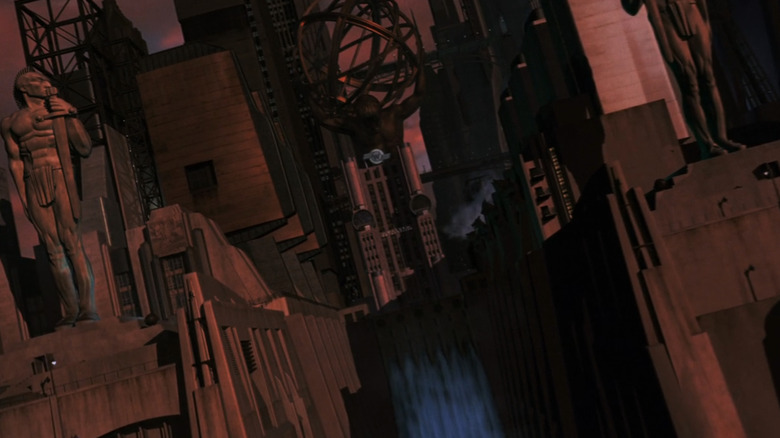
Leave a Reply